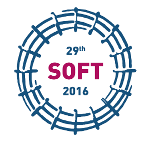Speaker
Tom H. Owen
(Remote Applications in Challenging Environments (RACE))
Description
Mascot is a two-armed dexterous master-slave telemanipulator device linked by force-reflecting servomechanisms, giving the operator a tactile sensation of doing the work. Mascot version 4.5 is currently in use at the Joint European Torus (JET) experimental nuclear fusion facility. Its role is to maintain the inside of the reactor vessel without the need for manned entry. The slave is typically attached to a boom which transports it to the work area.
The Mascot 6 project, funded by EFDA, was initiated to address reliability and availability issues arising as a result of obsolete technologies. In particular, the Mascot actuators based around obsolete 2-phase AC induction motors are to be replaced with actuators based on commercial off-the-shelf (COTS) Permanent Magnet Synchronous Motors (PMSMs). As a consequence of its highly integrated, monolithic design, the entire Mascot control system, including servoamplifiers, controllers, control software and HMI needs to be redesigned.
The Mascot6 control system is designed to maximise Reliability, Availability, Maintainability, and Inspectability (RAMI) of the system, as well as providing significant future-proofing. Standard interfaces are used to integrate subsystems wherever possible in order to maximise future proofing, and capacity for future modifications.
Mascot 6 control system utilises the advanced RACE generic framework for interoperable control. Advanced Computer-Aided-Teleoperation features such as dynamic force compensation and load cancellation are presented. A master safety system has been developed in order to maximise safety of the operator, whilst working with the master device as a collaborative robot.
Significant trials and development have also been conducted as part of the Mascot 6 project into design features and control techniques to meet the demanding performance requirements of the system, including producing a smooth torque output at or near stall, which is an unusual requirement for many motor and drive manufacturers, but is vital for teleoperation with transparent haptic feedback.
Co-authors
Ed Clark
(Remote Applications in Challenging Environments (RACE), UK Atomic Energy Authority, Abingdon, United Kingdom)
Jorge Rodriguez
(Remote Applications in Challenging Environments (RACE), UK Atomic Energy Authority, Abingdon, United Kingdom)
Robert M. Skilton
(Remote Applications in Challenging Environments (RACE), UK Atomic Energy Authority, Abingdon, United Kingdom)
Tom H. Owen
(Remote Applications in Challenging Environments (RACE), UK Atomic Energy Authority, Abingdon, United Kingdom)

